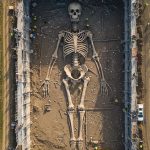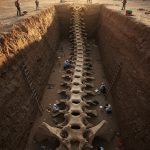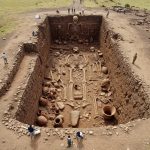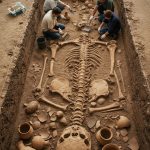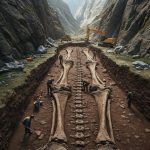BREAKING NEWS: Ancient Burial Revealed—Untouched Roman Sarcophagus Discovered in Pompeii

BREAKING NEWS: Ancient Burial Revealed—Untouched Roman Sarcophagus Discovered in Pompeii
Archaeologists working at the ancient city of Pompeii have announced a monumental discovery: the uncovering of a pristine Roman-Era sarcophagus. Unlike the usual pyre burials common to the area before the A.D. 79 eruption, this rare stone coffin was found intact within a previously unexplored necropolis just outside the city walls. The size and elaborate carvings of the Pompeii sarcophagus immediately suggest it belonged to a high-status official or a wealthy local elite who died shortly before the catastrophic eruption. This ancient burial revelation marks a major step in understanding the diverse funerary practices of the Roman citizens of Pompeii and is already generating international excitement in the archaeological world.

The Pompeii Sarcophagus: A Window into Pre-Eruption Roman Life
The excavation team is proceeding with extreme caution to open the sarcophagus, a process that promises a unique archaeological insight into the final moments of the ancient city. Unlike the ash-molded victims, a burial of this type is expected to yield preserved organic materials, including skeletal remains and potential funerary treasures like fine linens, jewelry, and personal items. Experts anticipate that analysis of the deceased’s DNA and diet will paint an unprecedented picture of the life of Pompeii’s elite just prior to the Vesuvius disaster. The carvings on the lid, which depict scenes from Roman mythology, are a priceless artistic find that will illuminate the cultural beliefs of the city’s wealthiest class.
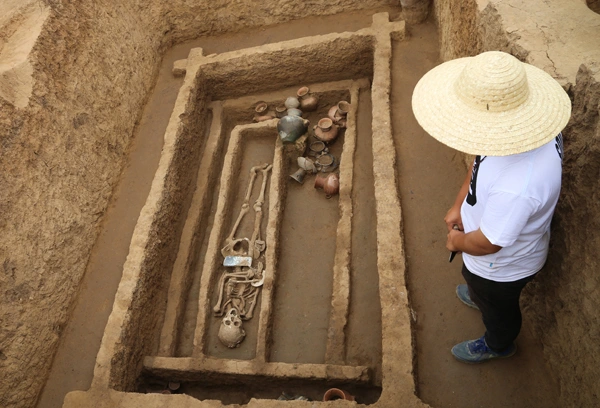
New Excavation Efforts Rewrite Pompeii’s History
The discovery of the Roman-Era sarcophagus underscores the immense potential of the ongoing, deeper excavations in Pompeii’s unexplored sectors. The specific location of this ancient burial suggests a continuous, organized development of the city’s peripheral burial grounds in the years leading up to the disaster, contradicting previous theories about the sudden abandonment of some areas. This breaking news is expected to attract renewed funding and focus to the region. Researchers believe that the details contained within this singular coffin will not only personalize the tragedy of A.D. 79 but will offer foundational new data to rewrite the history of Roman provincial life in the shadow of Mount Vesuvius.

